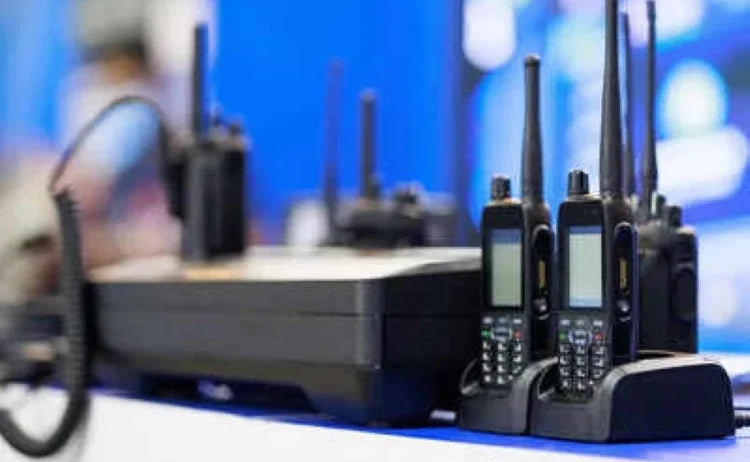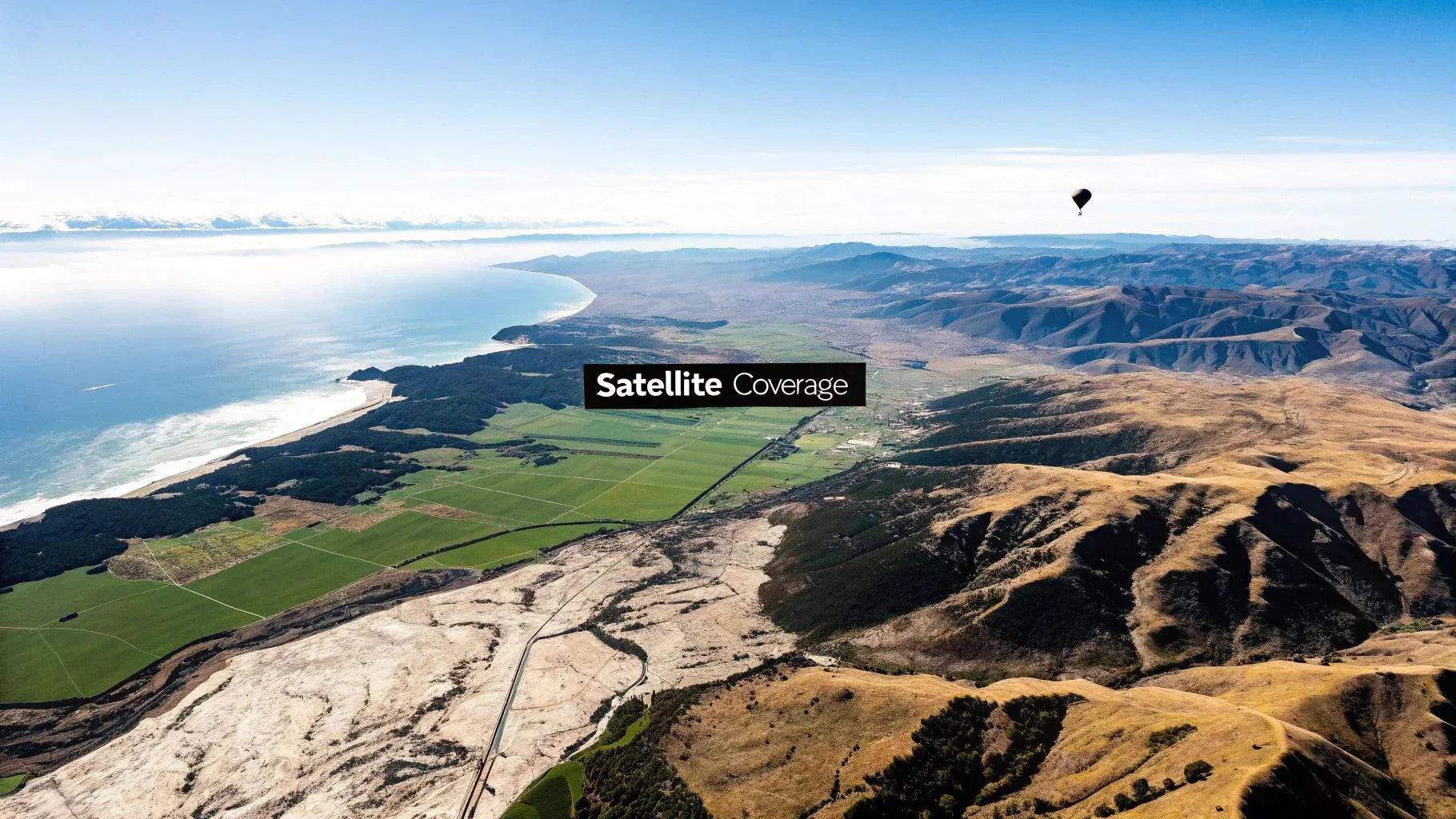Satellite Phone NZ: Stay Connected Anywhere
How Satellite Phones Work In New Zealand's Unique Landscape
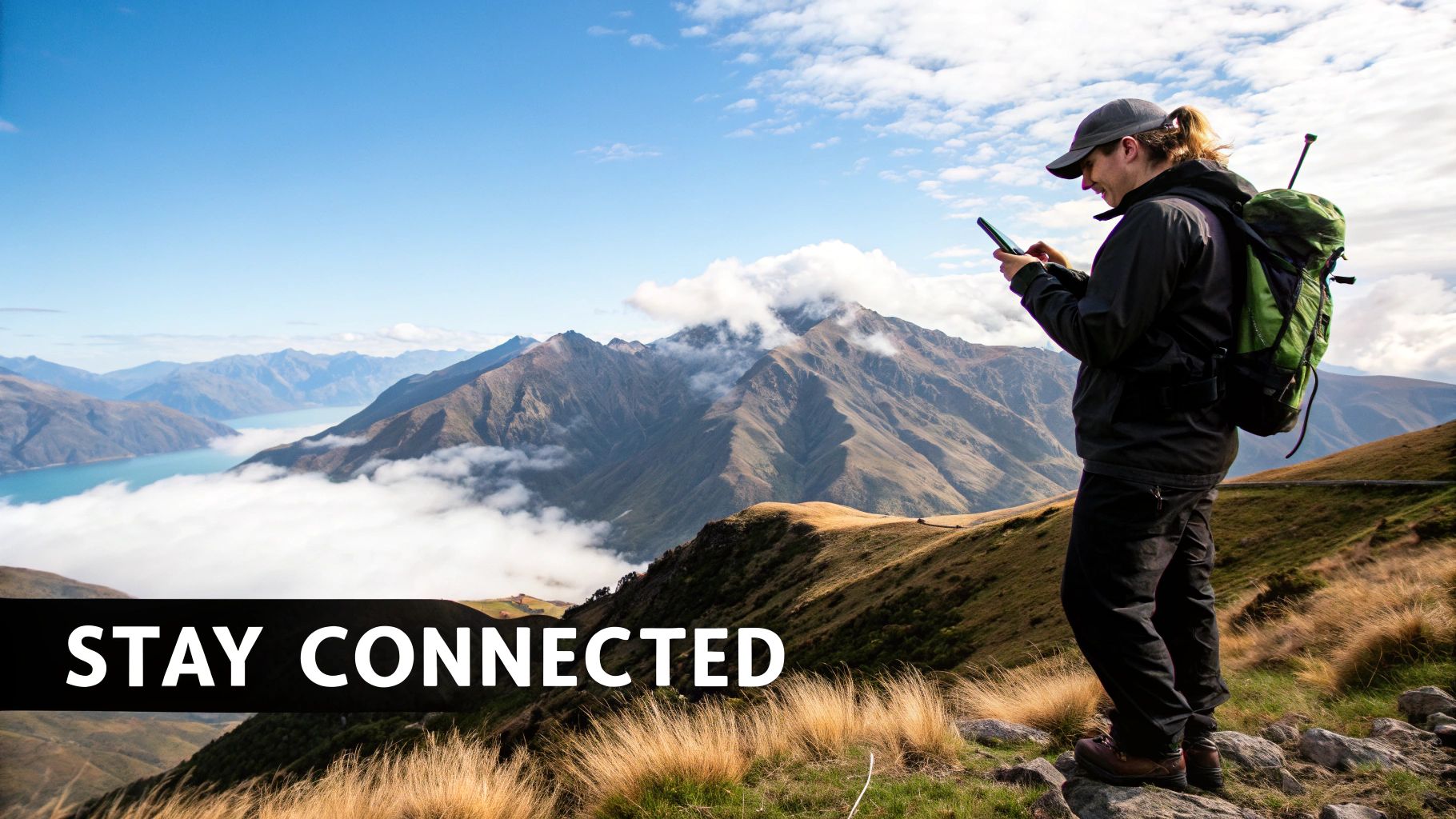
Picture this: you're trekking through Fiordland National Park, surrounded by breathtaking scenery. You reach for your mobile to capture the moment, only to be greeted by the dreaded "no service" message. Sound familiar? In New Zealand's rugged terrain, patchy mobile coverage is a common challenge. But there's a solution that lets you call for help, even when you're miles from civilization: the satellite phone.
Unlike your regular mobile, a satellite phone doesn't rely on earthbound cell towers. Instead, it communicates directly with satellites orbiting high above. Think of it like having a direct line to space. This makes satellite phones indispensable for anyone venturing beyond mobile coverage, whether you're climbing Aoraki/Mount Cook or managing a remote farm.
Understanding the Satellite Network
So, how does this space-based communication actually work? Imagine a network of relay stations in the sky – that's essentially what a satellite constellation is. Your satellite phone sends a signal upwards, which is then bounced between these satellites until it reaches a ground station. From there, the signal connects to the regular phone network, allowing you to call anywhere in the world. This explains the reliability of popular satellite phones like the Iridium 9555, the Iridium 9575, and the Inmarsat IsatPhone 2, especially in remote areas.
Bridging the Connectivity Gap in New Zealand
In New Zealand, where around 40% of the landmass lacks traditional mobile coverage, satellite technology is playing a key role in connecting remote communities. Much of this digital divide stems from the country's challenging landscapes and low population density. Companies like One NZ are partnering with Starlink to use their Direct to Cell technology. This innovative approach uses satellites as 'cell towers in the sky,' bringing mobile coverage to previously unconnected areas. You can learn more about One NZ's satellite initiatives here.
Satellite Phones vs. Mobile Phones: A Key Difference
The key difference between a satellite phone and a mobile phone boils down to how they connect. Mobile phones depend on a network of ground-based cell towers. Step outside the range of a tower, and you lose your connection. Mountains, valleys, and even dense foliage can easily disrupt mobile signals. Satellite phones, however, bypass these limitations by communicating directly with space, ensuring connectivity regardless of the terrain.
This direct link provides a lifeline in even the most remote corners of New Zealand, from Stewart Island to the Southern Alps. For adventurers, farmers, and anyone working in isolated regions, a satellite phone isn't just a gadget – it's a vital safety tool. Reliable communication can be the difference between a minor inconvenience and a serious emergency.
Real Coverage Performance Across New Zealand's Remote Areas
Imagine trying to get a mobile signal from the rugged coastline of Stewart Island, or deep within Fiordland’s rainforests. It’s a challenge, right? This is where understanding satellite footprints becomes critical. Each satellite network performs differently across New Zealand's diverse terrain. Knowing these differences could be the difference between a successful communication and dangerous isolation.
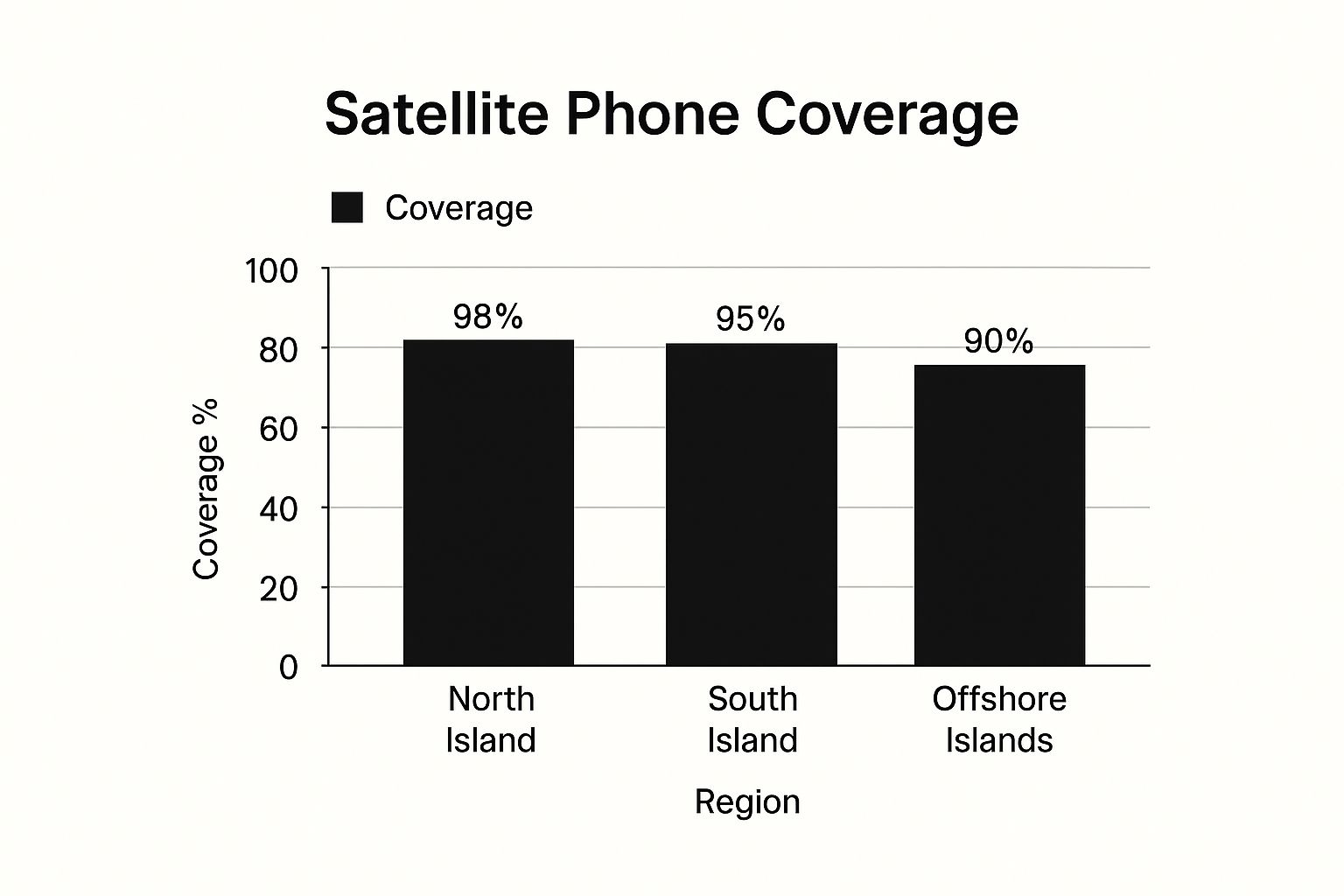
This chart gives you a visual idea of satellite phone coverage across New Zealand. You can see strong coverage across both the North and South Islands, with slightly reduced coverage in offshore areas. Even in challenging offshore environments, staying connected is achievable with the right satellite phone solution.
Let's explore how popular satellite phones like the Iridium 9555 and Iridium 9575 along with the ISatPhone Pro 2 perform, and discuss the impact of Starlink in New Zealand. Think of a satellite’s footprint as the area on Earth it can cover – like the beam of a spotlight. Factors like weather, mountains, and even dense bush can weaken that “beam,” affecting your call quality.
How Terrain Impacts Signal Strength
In mountainous regions like the Southern Alps, the angle of the satellite in the sky (the elevation angle) is key. A higher angle generally means a stronger signal. Picture a tramper in a deep valley struggling to get a signal, while someone up on an exposed ridge enjoys a crystal-clear connection. This highlights the importance of choosing the right network, such as Iridium versus Inmarsat, for your specific location.
Network Performance in Specific Locations
While mobile coverage in New Zealand is extensive, reaching over 99% of the population, gaps exist, especially in rural areas. This is where satellite technology steps in. Learn more about mobile coverage in New Zealand. As of 2024, mobile providers are working on expanding 4G and 5G services. However, satellite solutions remain essential for those remote pockets, acting as a crucial backup and complementing existing networks.
To help you visualize the differences in coverage, take a look at this table:
Satellite Phone Coverage Comparison Across New Zealand Regions
| Region | Iridium Coverage | Inmarsat Coverage | Starlink Coverage | Signal Strength |
|---|---|---|---|---|
| North Island | Excellent | Good | Developing | Strong |
| South Island | Excellent | Good | Developing | Strong |
| Offshore Areas | Good | Fair | Limited | Moderate to Weak |
| Fiordland | Good | Fair | Limited | Moderate |
| Southern Alps | Excellent | Good | Developing | Moderate to Strong (depending on elevation) |
| Canterbury High Country | Excellent | Good | Developing | Strong |
Note: This table represents a general overview and actual coverage may vary based on specific location and weather conditions.
As you can see, Iridium generally offers more robust coverage across New Zealand, particularly in challenging terrains. Inmarsat provides good coverage in most areas but may be less reliable in extreme environments. Starlink's coverage is still developing but shows promise for future connectivity. Signal strength also fluctuates depending on the region and specific topographical features.
User Experiences Across New Zealand
Different users have different experiences. Farmers in the Canterbury high country often rely on Iridium for its dependability. Marine operators working around the coast may find Inmarsat more suitable for their needs. Starlink's Direct to Cell technology offers a new approach, potentially changing how everyday smartphones work in remote areas by connecting them directly to satellites. This is still a developing technology, but it has the potential to be a game-changer. Choosing the right satellite phone requires thinking about your specific needs and where you’ll be using it.
Starlink Direct-To-Cell Revolution For New Zealand Users
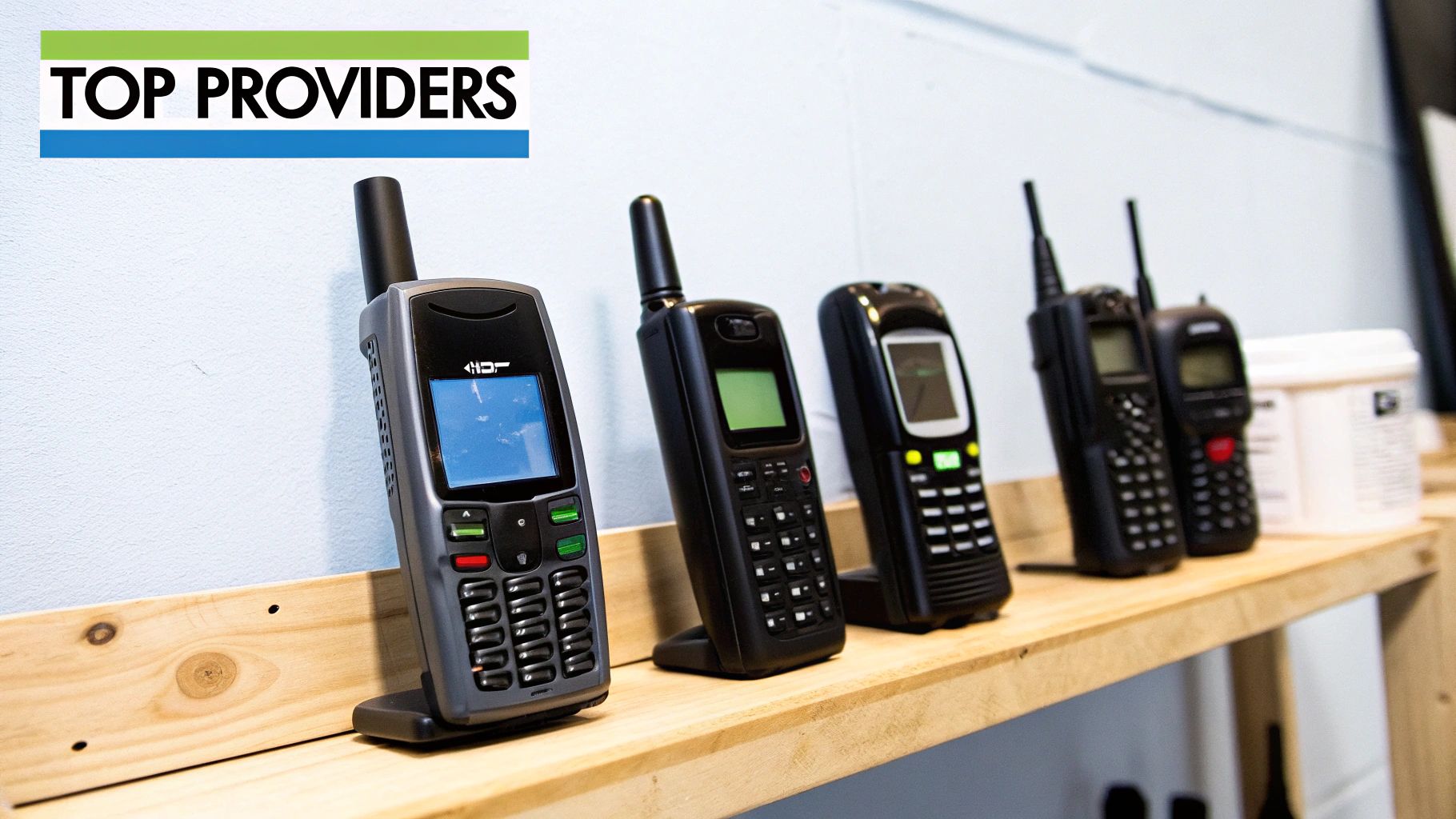
Imagine standing amidst the rugged beauty of the Canterbury high country, pulling out your iPhone and… getting a signal. This is the promise of Starlink's Direct-to-Cell technology. Instead of lugging around a dedicated satellite phone, this system allows your everyday smartphone to connect directly to Starlink's network of low-orbit satellites. Think of it as turning space itself into a massive cell tower.
How Direct-to-Cell Impacts New Zealand
This technology has the potential to reshape connectivity for a wide range of Kiwis, from farmers and adventurers to those working remotely. Traditionally, staying connected in remote areas meant relying on pricey satellite phone options like the Iridium 9555, Iridium 9575, or ISatPhone Pro 2. Starlink is poised to offer a more affordable and accessible solution. For a deeper dive into how Starlink works, check out this article: How Does Starlink Work?
Picture this: a farmer, miles from anywhere, checking on stock in a remote paddock. With Direct-to-Cell, they can easily stay in touch with the team back at the farm using their regular mobile. Or consider a group of trampers exploring the challenging terrain of Fiordland. They can now use their smartphones for emergency calls, adding a significant layer of safety and peace of mind.
Starlink's Growth and Impact
Starlink's presence in New Zealand's broadband market is rapidly expanding. By 2023, they'd already garnered approximately 85,000 users, representing roughly 2% of the market share. This growth is especially crucial in rural areas where traditional fibre connections are simply not an option. Given that around 13% of New Zealanders live outside the fibre footprint, Starlink is playing a vital role in bridging the digital divide and offering affordable internet access to families in these underserved regions. For a closer look at Starlink's adoption in New Zealand, you can find more information here.
Current Capabilities and Limitations
It's important to remember that Direct-to-Cell is still a developing technology. While the potential is huge, there are current limitations to be aware of.
- Coverage: Coverage might not be as comprehensive or dependable as traditional satellite phones, especially in areas with difficult terrain or during bad weather.
- Data Speeds: Data speeds are generally slower than what you'd expect with a standard mobile connection.
- Functionality: The current focus is primarily on basic communication, like text messaging and voice calls. Features like high-speed data transfer and GPS are still in the works.
Before you decide to trade in your dedicated satellite phone, carefully consider your specific needs and the current limitations of Direct-to-Cell. Remember, traditional satellite phones, like the Iridium 9555 and 9575, still provide a reliable lifeline, especially in critical situations where a robust connection is essential.
Iridium 9555 Versus 9575: Which Device Matches Your Needs
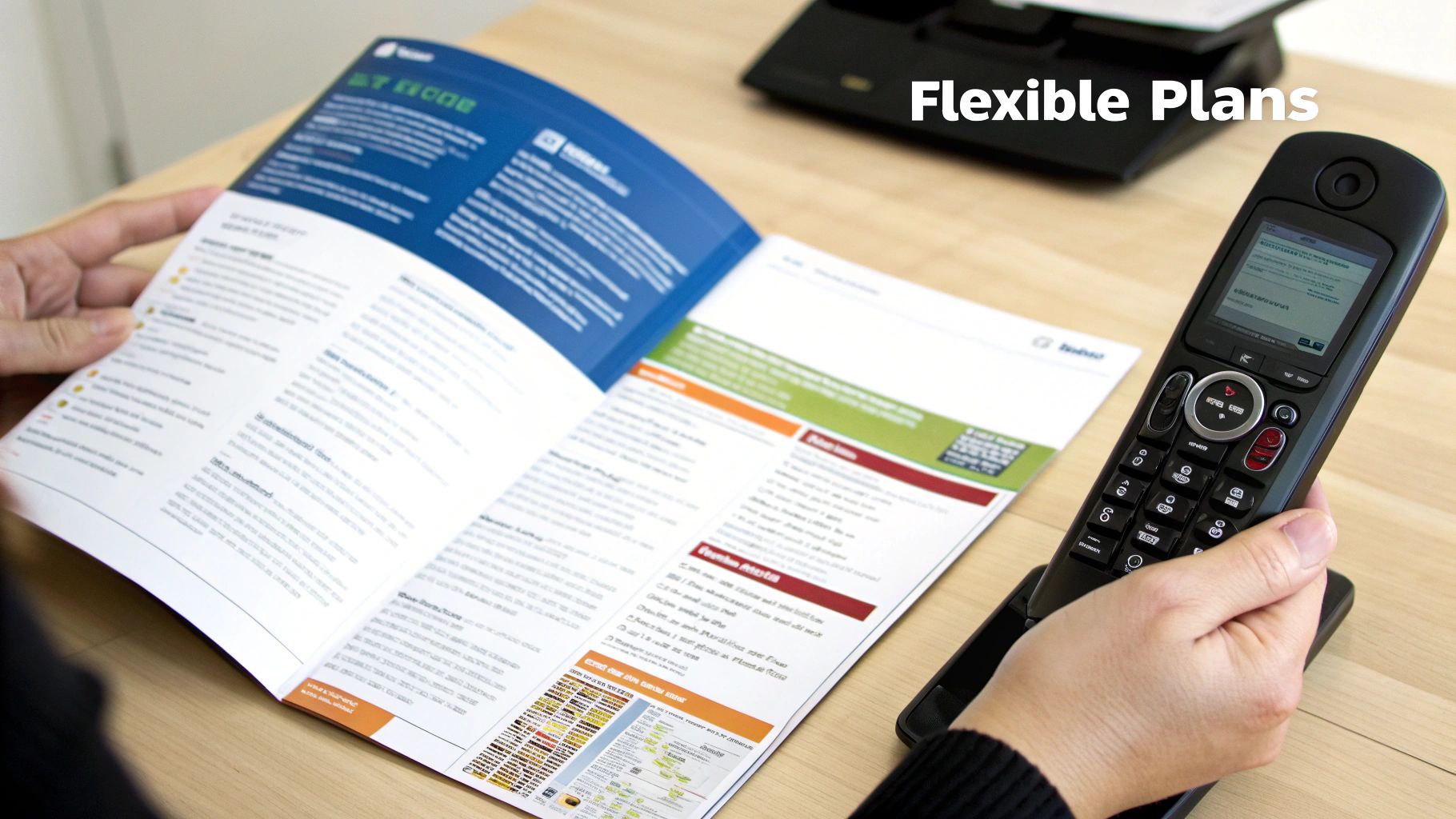
Picking the right satellite phone can feel a bit overwhelming. Think of choosing between the Iridium 9555 and the 9575 like choosing between two trusty utes. Let's say a Toyota Hilux and a Ford Ranger. Both are reliable and will get you where you need to go, but they offer different features and experiences. The 9555 is your no-frills, dependable Hilux: perfect if you primarily need voice calls and text messages in remote parts of New Zealand. The 9575 is more like a Ranger, packed with extras like GPS tracking and email, built tougher for challenging conditions.
Key Differences for New Zealand Users
Let's bring this comparison to life with some Kiwi examples. Picture a farmer working in the Canterbury high country. The 9555's impressive battery life is a game-changer, letting them stay connected all day while checking stock, without constantly worrying about charging. Now, imagine a tramper navigating the dense Fiordland National Park. Here, the 9575’s integrated GPS becomes invaluable, providing precise location information and ensuring they stay on track.
If the 9555 sounds like it might fit the bill, you can dig deeper into the specifics here: Iridium 9555 Satellite Phone. It's a rock-solid choice if simplicity and reliability are your top priorities.
Comparing Features and Performance
Let's shift our focus to a commercial operator working offshore. In the unpredictable conditions of the open ocean, the 9575’s rugged design becomes a major advantage, withstanding harsh weather and the occasional splash of saltwater. The ability to send emails quickly also becomes incredibly useful, allowing for seamless reporting and communication back to the mainland.
To make comparing these two models easier, we’ve put together a handy table highlighting the key differences:
Iridium 9555 vs 9575 Feature Comparison Detailed comparison of features, specifications, and capabilities between the two most popular Iridium satellite phone models
| Feature | Iridium 9555 | Iridium 9575 | Advantage |
|---|---|---|---|
| Primary Use | Voice calls, texting | Voice calls, texting, GPS, email | 9575 (more features) |
| Durability | Good | Enhanced | 9575 (more rugged) |
| Battery Life | Excellent | Good | 9555 (longer lasting) |
| Complexity | Simple | More complex | 9555 (easier to use) |
| Cost | Lower | Higher | 9555 (more budget-friendly) |
As you can see, the 9555 excels in simplicity and battery life, while the 9575 offers more features and greater durability.
Real-World Scenarios and User Testimonials
Let's hear from some actual users. A King Country farmer shared, "I've relied on the 9555 for years, and it's always been there for me. I need a phone I can count on for emergencies and quick check-ins, and it does exactly that." Meanwhile, a backcountry guide working in the Southern Alps praised the 9575’s GPS: "The tracking function is crucial for our operations, adding an extra layer of safety when we’re leading groups through challenging terrain." These real-world experiences highlight how each device shines in different New Zealand settings.
Ultimately, the best Iridium model for you boils down to your individual needs and budget. If simplicity, reliability, and affordability are at the top of your list, the 9555 is a fantastic option. If you need the added capabilities of GPS, email, and a tougher build, the 9575 is worth the extra investment.
ISatPhone Pro 2: The Ultimate Rugged Choice For Harsh Conditions
Imagine needing reliable communication in the most challenging environments New Zealand can throw at you. Picture the rugged West Coast, battered by relentless waves, or the freezing isolation of the Southern Alps. This is where the ISatPhone Pro 2 comes into its own. Think of it as the Land Cruiser of satellite phones – built tough and ready for anything.
This isn't your average mobile. It's designed for those situations where regular cell service simply won't cut it. Whether you're on a fishing boat battling a Fiordland storm or managing a high-country station in the depths of a Canterbury winter, the ISatPhone Pro 2 provides a vital lifeline.
Durability in Action: Real-World New Zealand Stories
We've heard firsthand accounts from Kiwis who've put this phone through the wringer. One story comes from a Southern Ocean sailing expedition, where the ISatPhone Pro 2 weathered constant waves and icy spray without missing a beat. Another describes a crucial alpine rescue, where the phone maintained a critical communication link in sub-zero temperatures. These real-world experiences demonstrate the exceptional resilience and dependability of the ISatPhone Pro 2 in New Zealand's demanding conditions.
Inmarsat vs. Iridium: A Different Approach to Satellite Communication
The ISatPhone Pro 2 utilizes the Inmarsat network, which relies on geostationary satellites. These satellites orbit much higher than Iridium's and remain fixed above a specific location on Earth. Think of it like having a dedicated communication tower in space, rather than a network of moving satellites. This approach offers distinct advantages, particularly for longer calls and transmitting data.
Performance Insights: Battery Life, Waterproofing, and Impact Resistance
Now for the practicalities. How does the battery fare in a freezing Canterbury winter? Can it handle a Tasman Sea crossing? What about a drop onto rocky terrain? User feedback points to impressive battery performance even in extreme cold, reliable waterproofing in challenging sea conditions, and significant impact resistance. These are vital considerations for anyone relying on a satellite phone in New Zealand's diverse and unpredictable environment. If you're intrigued by the ISatPhone Pro 2, you can explore more details and purchase options here.
Choosing the Right Tool for the Job: When the ISatPhone Pro 2 Makes Sense
While other satellite phones like the Iridium 9555 and 9575, along with newer technologies like Starlink, offer their own advantages, the ISatPhone Pro 2's strength lies in its ruggedness. It's purpose-built for those who prioritize durability and reliability above all else. Whether you're a professional working in harsh environments or an adventurer exploring New Zealand's remote corners, the ISatPhone Pro 2 provides peace of mind, ensuring you can stay connected, no matter what. Choosing the right satellite phone depends on understanding your specific needs and usage, so you have the best tool for your communication requirements.
Smart Economics: Buying Versus Hiring Satellite Phones
Thinking about getting a satellite phone in New Zealand? The choice between buying and hiring is a bit like deciding whether to buy a car or use a ride-sharing service. The initial price is just one piece of the puzzle. You also need to consider running costs like activation fees, international roaming charges (which can differ greatly between providers like Iridium and Inmarsat), equipment insurance, and ongoing service plan costs.
Cost Scenarios in New Zealand
Let's paint a few pictures to see how this plays out in real life. Imagine a weekend hiker using a satellite phone for emergencies while exploring the Southern Alps. For them, hiring makes the most sense. It avoids the big upfront cost of buying a device like the Iridium 9555 or ISatPhone Pro 2.
Now picture a farmer in the Canterbury high country who needs reliable communication during mustering season. For them, owning a satellite phone, perhaps the Iridium 9575 with its GPS, is worth the higher initial price. They sidestep rental fees and have a dedicated communication lifeline whenever they need it.
Then there's the marine operator working offshore, needing constant connection for safety and business. Buying a rugged device like the ISatPhone Pro 2 and subscribing to a hefty monthly plan is likely the best approach.
Unpacking the Costs: GST, Dealer Markups, and Hidden Fees
When buying a satellite phone in New Zealand, don’t forget about GST. Local dealer markups can also bump up the final price, so shop around. And watch out for hidden costs like SIM card fees or specific charger requirements that can add to the total.
Case Studies: Finding Your Break-Even Point
How do you know if buying or hiring is better for your wallet? Think about how often you’ll use the phone. Let's look at some examples.
- Occasional User: A hiker renting a satellite phone for a weekend in Fiordland might pay $50-$100. Buying an Iridium 9555, even at its lower price, would take many trips to justify the cost.
- Seasonal User: A farmer using a satellite phone for a few months each year might find rental fees piling up. Buying a device could be cheaper over time, offering reliable access at a predictable price.
- Daily User: For a marine operator relying on constant communication, buying a satellite phone and choosing a suitable monthly plan is almost certainly the best financial strategy.
Making the Right Decision for Your Needs
There’s no single right answer when it comes to choosing between buying or hiring a satellite phone in New Zealand. It’s all about your individual situation. Think about how often you’ll use it, your budget, and what you need it for. Do you just need basic calls, or advanced features like GPS? Are you a weekend adventurer or a daily user? By weighing these factors, you can make the smartest choice and stay connected when it matters most.
From Tramping Adventures To Farm Operations: Real-World Applications
Satellite phones aren't just fancy gadgets; they're vital communication tools across New Zealand's diverse terrain. From the rugged Fiordland National Park to the vast Canterbury high country, these devices can turn a potentially dangerous situation into a manageable one. Let's explore how New Zealanders use satellite phones in their daily lives and work.
Real-World Examples of Satellite Phones in Action
Picture a search and rescue mission in the remote Fiordland area. Coordinating teams, sharing crucial information, and staying in contact with the outside world relies heavily on satellite phones. They become the central communication hub. Similarly, imagine a high-country farmer facing severe weather. A satellite phone allows them to check on livestock, arrange for supplies, and maintain contact with support networks. Even recreational boaters encountering unexpected trouble in the Cook Strait can use their satellite phone to call for help and ensure a quick response.
Integrating Satellite Phones into Daily Operations
Satellite phones are valuable for more than just emergencies. Tramping groups use them for scheduled check-ins, offering peace of mind to loved ones. Businesses operating in remote locations rely on satellite phones for everyday communication, logistical coordination, and safety procedures. These examples show how satellite phones have become essential to various aspects of New Zealand life, ensuring reliable communication where standard cell networks fail.
Combining Satellite Phones with Other Safety Equipment
Satellite phones are even more effective when combined with other safety devices. Think of a Personal Locator Beacon (PLB) as your emergency SOS button. It sends your location to rescue services, but it doesn't allow for a two-way conversation. A satellite phone complements a PLB, allowing you to give important details about the situation and receive instructions. Similarly, while GPS devices offer location data, a satellite phone allows you to share that information. Combining these tools creates a comprehensive safety net, especially in remote areas.
Emergency Protocols and Communication Strategies
In a New Zealand emergency, knowing how to use your satellite phone effectively is critical. Contacting emergency services requires clear communication, providing precise location details, and a concise description of the emergency. When battery life is low, prioritizing important messages is crucial. Short, informative texts are more efficient than long calls. Understanding these protocols, and being familiar with your specific device (whether it’s an Iridium 9555, Iridium 9575, or an ISatPhone Pro 2), can be life-saving.
Maximizing Your Investment and Avoiding Common Mistakes
Learning from others’ experiences can save you from common mistakes. Many underestimate the importance of a fully charged satellite phone before heading into the backcountry. Others don't take the time to learn their device’s features, leading to frustration in crucial moments. Understanding your device's capabilities and limitations, along with following recommended emergency protocols, maximizes your investment and ensures you're ready for anything.
Stay connected with Mobile Systems Limited, New Zealand’s specialist in mobile and portable communication solutions. We offer a wide range of satellite phones and communication equipment. Visit us at Mobile Systems Limited to learn more.

